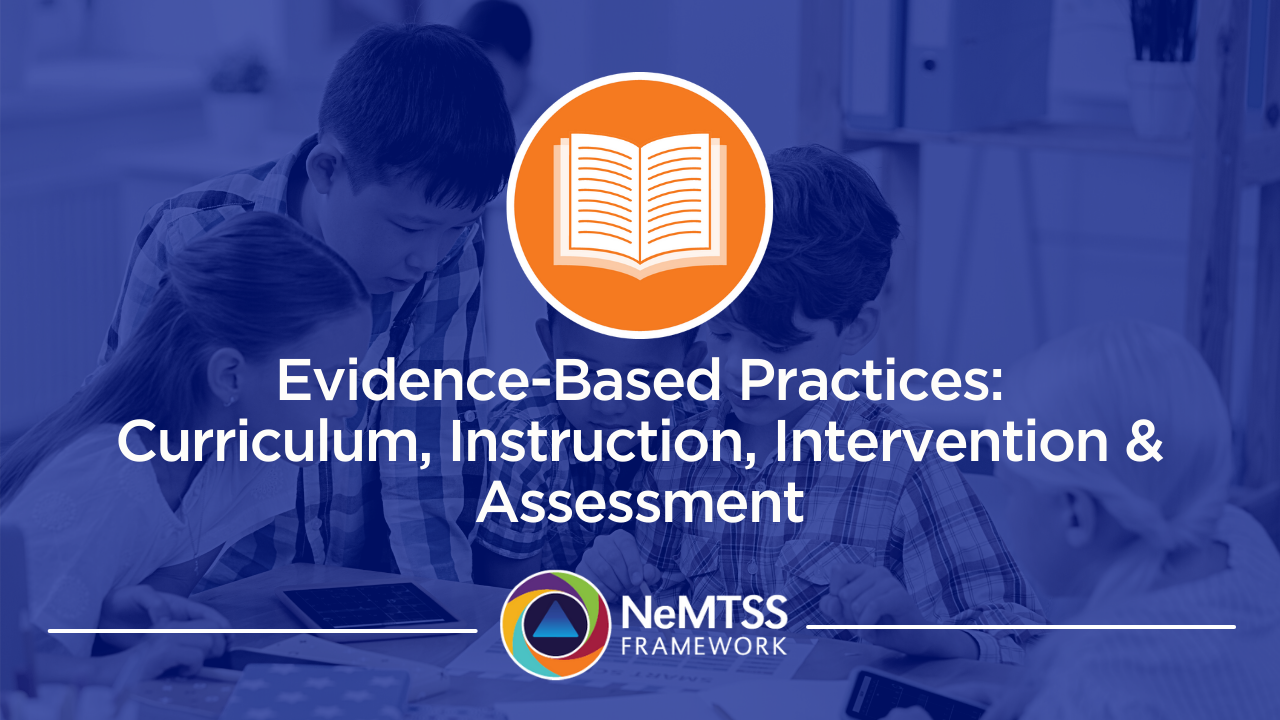Essential Element | Evidence-Based Practices: Curriculum, Instruction, Intervention & Assessment
Welcome to the third installment of our six-part blog series on the Essential Elements in NeMTSS.
The Essential Elements are one of the first things new districts learn about during System Training. They are encouraged to think about how each element plays a part in their district currently and how each element will help them be successful with NeMTSS in the future.
Each element is equally important to the process.
The NeMTSS Essential Elements are:
- Shared Leadership
- Communication, Collaboration & Partnerships
- Evidence-Based Practices: Curriculum, Instruction, Intervention & Assessment
- Building Capacity & Infrastructure for Implementation
- Layered Continuum of Supports
- Data-Based Problem-Solving & Decision-Making
Today, we will be talking about Evidence-Based Practices: Curriculum, Instruction, Intervention & Assessment in education.
Evidence-Based Practices: Curriculum, Instruction, Intervention & Assessment
Curriculum refers to an outline of the intended outcomes, content, experiences, assessments and resources for student learning. It is based on and aligned to content area standards.
Instruction is how the teacher delivers the curriculum in his or her classroom.
Interventions are chosen based on the needs of the group (students, classes, grades, and schools).
Assessments are used to measure progress.
When districts and schools choose and design their curriculum, instruction, interventions and assessments, it is important to use Evidence-Based Practices — methods that have been tested and proven to work. To be considered an Evidence-Based Practice, a practice must have multiple demonstrations of effectiveness for the intended population from high-quality experimental studies.
NeMTSS provides support to districts to find and implement these Evidence-Based Practices. The Program Comparison Tool on our website allows educators to search for programs based on content area, grade level, delivery method and other filters.
Schools may also have methods that they have been using successfully in the past. During System Training, schools are asked to examine their “Tool Shed,” a warehouse of all the programs they use and how they are used.
Through a self-discovery process, NeMTSS facilitators help teams take an inventory of the programs and practices they are currently using. From there, further refinement occurs based on reflective questions and data to organize what programs are most effective for their specific population, what programs may not be as useful anymore, and what programs they may want to adapt or potentially add, to fill in any gaps in their Tool Shed.
Why is Evidence-Based Practices Essential to NeMTSS?
Evidence-Based Practices is one of the Essential Elements of NeMTSS because it helps to build the bridge between research and practice. Reviewing the evidence behind current methods also helps school districts find the best tools to use during their problem-solving process. Having good tools at their fingertips, and knowing when to use what tool, along with data can help districts become more efficient problem solvers because they don’t waste time using methods that don’t work.
Evidence-Based Practices is connected to all the other Essential Elements because in order to be successful with the other elements, we have to use evidence-based practices. Evidenced-based practices increase the likelihood students will have positive outcomes. When schools do not consider the research supporting a practice, they are taking a chance that the time and resources put into the practice will be wasted on ineffective outcomes.
Visit our web page on Evidence-Based Practices: Curriculum, Instruction, Intervention & Assessment to learn more. We also encourage you to read the previous posts in our series, Shared Leadership and Communication, Collaboration & Partnership.
Next time, we will look at Building Capacity & Infrastructure for Implementation.



